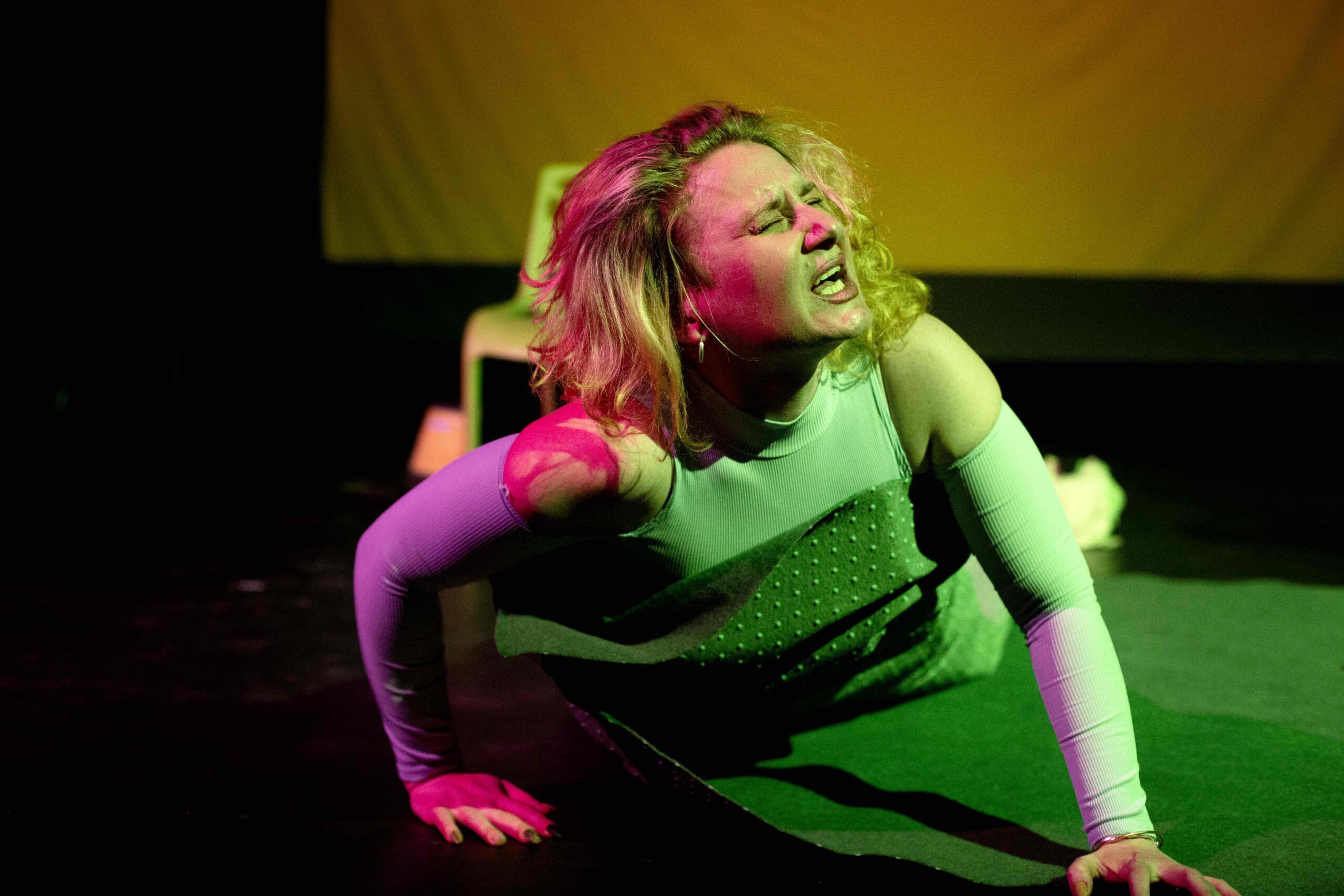The following conversation with NARTnART took place at Teatret Zeppelin on 8 May 2022 prior to their work in process sharing of a fake conference on the topic failure facilitated by HAUT. Between the paragraphs of the conversation moderated and edited by Sandra Cecilie Quist you will find notes from the conference that took place shortly after the interview. NARTnART invited the audience inside to experience a fake conference playing with sense and nonsense in an academic art setting. A performance leaving all our insecurities out in the open.
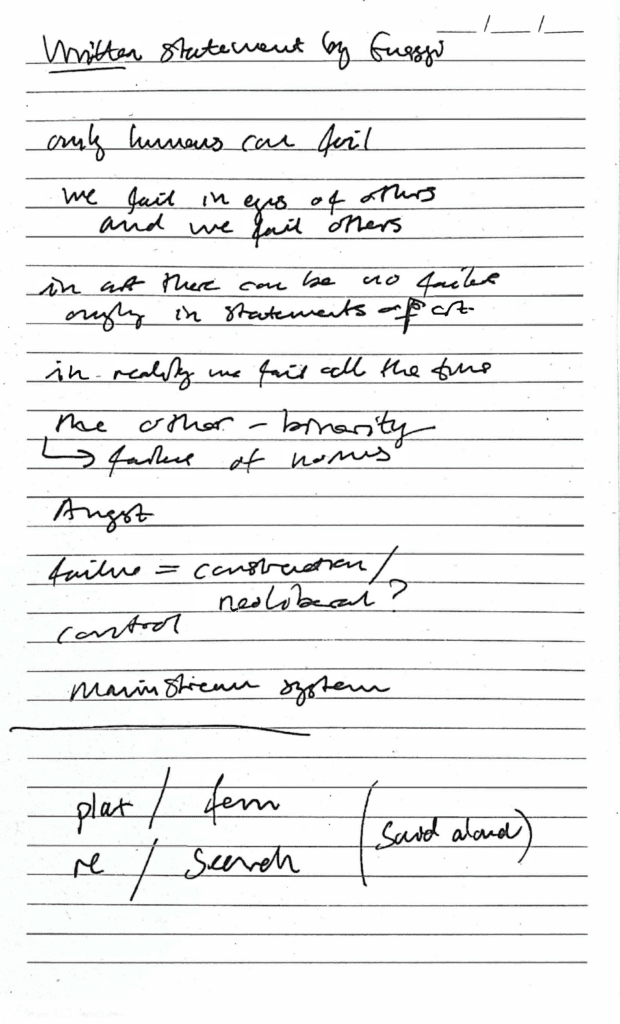
I am meeting NARTnART on the stage in a black box. I will interview their artistic alter-egos, four fictional characters, named Beate, Olli, Kæy and Guggi. I sense a bit of tension within the group.
Would you maybe start by introducing yourself and explain what NARTnART is? You have also changed your name, can you explain why?
Beate: NART is a term for a phenomenon that we have invented. A phenomenon constituting a possibility or an actuality defined as neither art or not art. A couple of years ago we had a name change because we realised that for us it is not enough to only dive into the NART, which is neither art or not art, we also want to see the collision between the NART and ART. That is why we changed our name from NART to NARTnART International… I have a long practice of swapping between different art forms, rather than swapping I would say fluctuating as well as dwelling and swimming figuratively speaking. I have been doing the performance arts, the visual arts, natural arts, sensory performativity performances, as well as auditory and some nasal performances, which became a really ground-breaking place for me in my career. From there I started to do these brutalist performances, but also theory and I started writing about what I was doing in essays.
Olli: I don’t really… Could you not eat that right now?
Beate: It’s just, I didn’t have breakfast…
Olli: But it’s recording… This concept of bio or presenting yourself is to me always tricky. Who I am today is maybe not who I am tomorrow artistically and personally. I can just say that today I feel ready and present and those are kind of core elements…
Could you not eat that right now? Really?
And that is just to me the core of my artwork and theory work and my whole approach that are in between those two.
Kæy: I’m an activist, performer, visual artist etc. etc. whatever you like to define me as. I work site-specific, improvisational based, sometimes with an audience, mostly without, which I enjoy as I perform for nature, objects etc. etc. I consider myself more as an animal than as a human. As humans are animals.
Guggi: I basically am the one doing all the practical things, technical stuff, in the NART collective. But I also have an artistic practice which is writing, composing music, and editing videos.
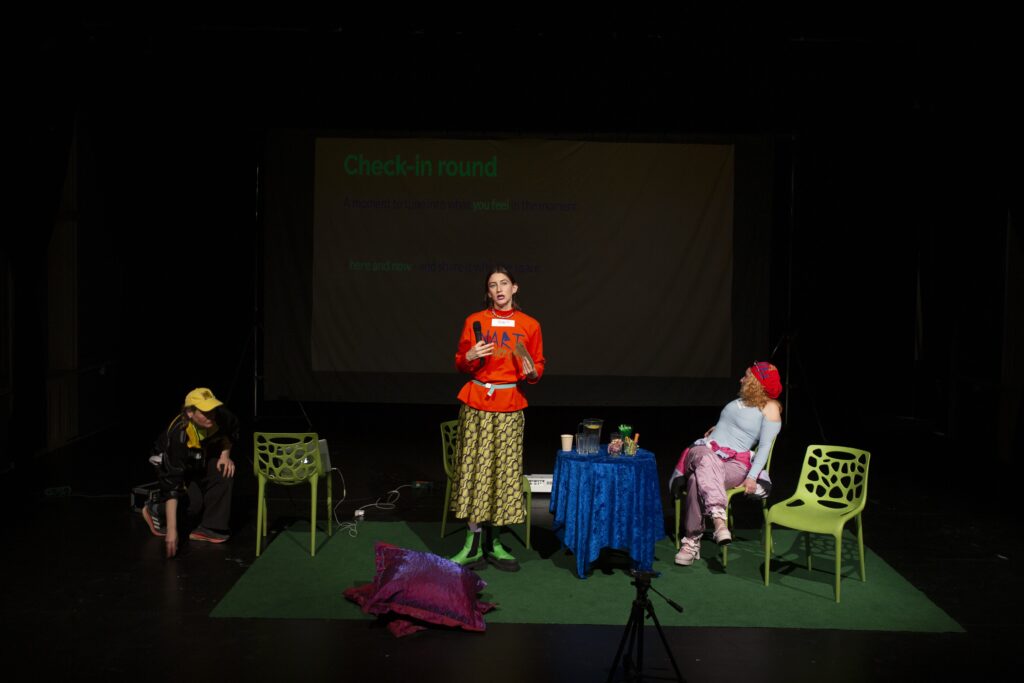
How come you are all working together?
Olli: Three of us, Guggi, Beate and I, met in art school. And then we saw a performance by Kæy in a festival, and we just thought…
Kæy: I was actually not in the festival programme. I made a performance and crashed the festival.
Olli: Right, exactly, we saw that, and we thought that Kæy would be a nice element in the NARTnART collective.
Beate: And it really sparked this new idea of the notion of NART. Because what is it when a performance artist crashes and intervenes with a performance in a festival where they are not meant to be. It brings to the table some really interesting questions, which I think inspired interesting talks between us. That is actually where the idea of NART began.
Kæy: Neither art or not art.
Why did you decide to do a conference about failing today?
Beate: We were invited, selected…
Kæy: We applied. I found the open call and thought it sounded great. I don’t really believe in the notion of failing. So why not crash it? We all have different perspectives on this.
Olli: We are very international in NARTnART – because we are not based anywhere. We are floating between many European countries for now. As you know, our last conference was in Germany, so we also really wanted to be present in a city like Copenhagen.
I was wondering, if you have any concrete experiences with failing or failure? You previously mentioned that you don’t believe in failing, but how do you feel about failing personally and within your practises?
Kæy: Well, yes, I personally don’t believe in failing, but I would say, if I put on society’s glasses, which are fucked, then, yes, I have failed every single time I have so called “failed” and now I do these quotation marks.
Olli: I think what Kæy is trying to say is that you could consider what Kæy is doing as failure in the sense of watching it always creates a sense of uncomfortability – it is not always nice to watch what Kæy is doing. It is not always super prepared.
Kæy: It is improvisation based… Often when you make a performance, you would like an audience, and the bigger an audience you have the bigger a success. I don’t believe in that. An audience or no audience, who cares?
Beate: This question of failure in my personal experience as an artist is a topic that I would like to avoid, because especially at the moment I have some stuff going on that makes me reluctant to speak about failing. But I can maybe reveal that I have experienced some failure in my artistic practice. I have chosen to see this as something to put in a box and forget.
How do you feel about overperformance or overcompensation? And how do you deal with your own insecurities?
Guggi: Do you mean overperforming after you feel you failed?
Yes, or as some kind of strategy to avoid insecurity?
Guggi: I think we all have different strategies for dealing with uncomfortable situations, and if the sensation of failing creates discomfort, then … I think it can end in overdoing something as a natural mechanism to threats. But the opposite can also happen, that you totally withdraw from a situation, depending on your character and the strategies you learned and how they work for you.
Beate: I always choose to rather overcompensate than withdraw. I think it is really interesting to overcompensate as a means of production.
Olli: There is so much transparency in my work. The different spaces are emerging. The sphere of the audience and my sphere. The failure is never individual, it will always be collective. If I fail, everybody fails. And in that way, we share it, and it actually becomes the core of the work.
Beate: This is a good example of where I would step in and overcompensate.
Oli: You mean, if I failed, you would step in in my performance and overcompensate?
Beate: No, after… or meanwhile.
Olli: Fine, but not today. I don’t think you should do that today in the conference, because I would like to
Beate: But are you planning to fail?
Olli: No, but if something happens, that you would consider failing, I just don’t think there is a definition of failure
Beate: I have actually written a definition of failure
Olli: But that is your definition good we talked about that
In my own experience, failing makes one vulnerable. Do you find a creative potential in vulnerability?
Olli: I don’t want to speak too much but vulnerability is kind of the core of the NARTnART work.
Beate: I’ll just remove this, because you are breathing on the snacks
Olli: It is really hard to focus actually
Vulnerability to me is actually at the core of the NARTnART realm. If there wasn’t any vulnerability, there wouldn’t be any of our work.
Kæy: I think vulnerability is the key to step in and create something. Though, and now I become controversial, that is total bullshit. Because everyone just puts on this shield: “now I’m vulnerable”, valuable, maybe. But really you are just doing your shit. You know what you are doing. Of course, you need to be vulnerable, but it is also an easy card to throw. You have to do it to create work but it is also kind of a comfort zone.
Beate: I have chosen only to be vulnerable at home. For example, in my bed.
Olli: I just don’t think you can claim to be vulnerable in a space that is not threatening you like your bed. It depends of course where you are, with whom, but vulnerability is also connected to being at risk. For me I just need to be radically vulnerable all the time.
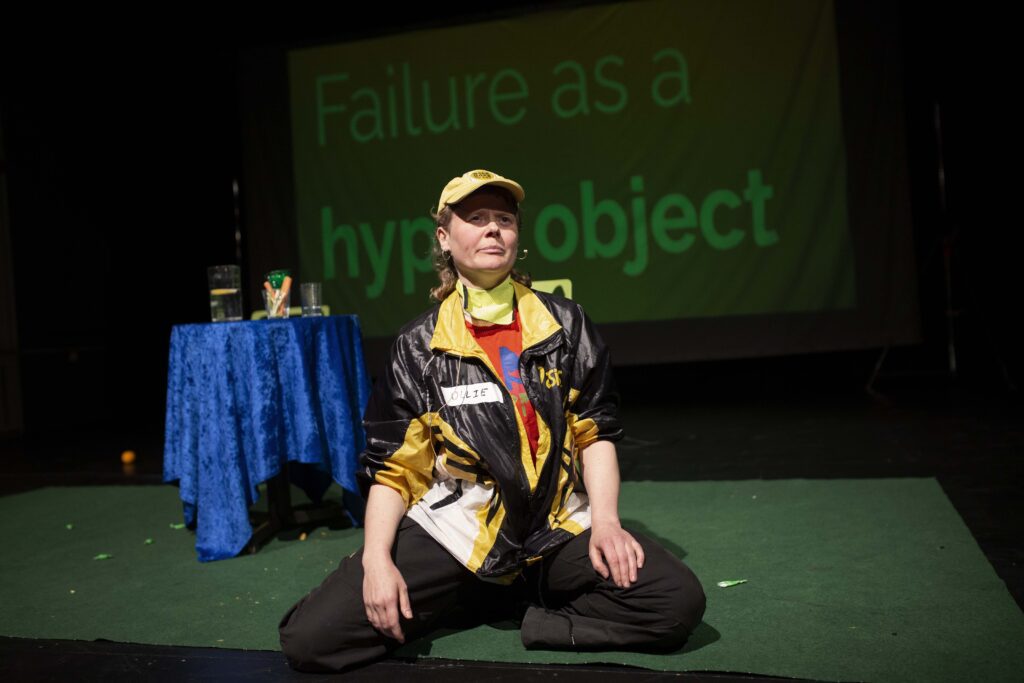
Experiencing a previous work sharing of today’s upcoming conference, I felt your work shed light on a lot of insecurities within the art world. Do you recognize this interpretation?
Kæy: Insecurities, I have definitely seen other people being insecure – also in this group.
Guggi: I think I would ask if this has to do with the art field. To what extent this insecurity we see in people acting in the art field has to do with structures within the art field. If they are consistent, if they are unspoken, there are probably many unwritten rules, which always leads to a lot of insecurities, if you have to navigate through an unknown chaos.
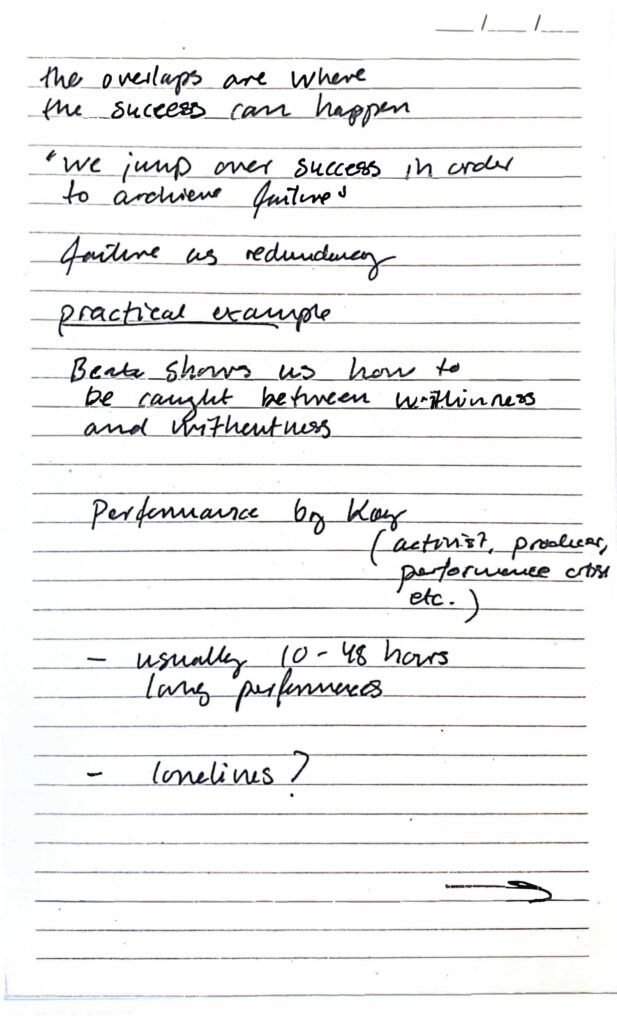
Do you recognise this?
Guggi: Not so much, so far, because I have not tried to be really successful. It also has to do with wanting to really make it, wanting to mingle, make a name for yourself and impress people and so on, because then you have to play by the rules you don’t know.
Olli: I think it is really interesting and valuable what Guggi is saying. Maybe just to underline that NARTnART is still an upcoming, small and for some people unknown art collective. That is our personal choice, that we would rather stay in the periphery to freely, without any conventions, do our work.
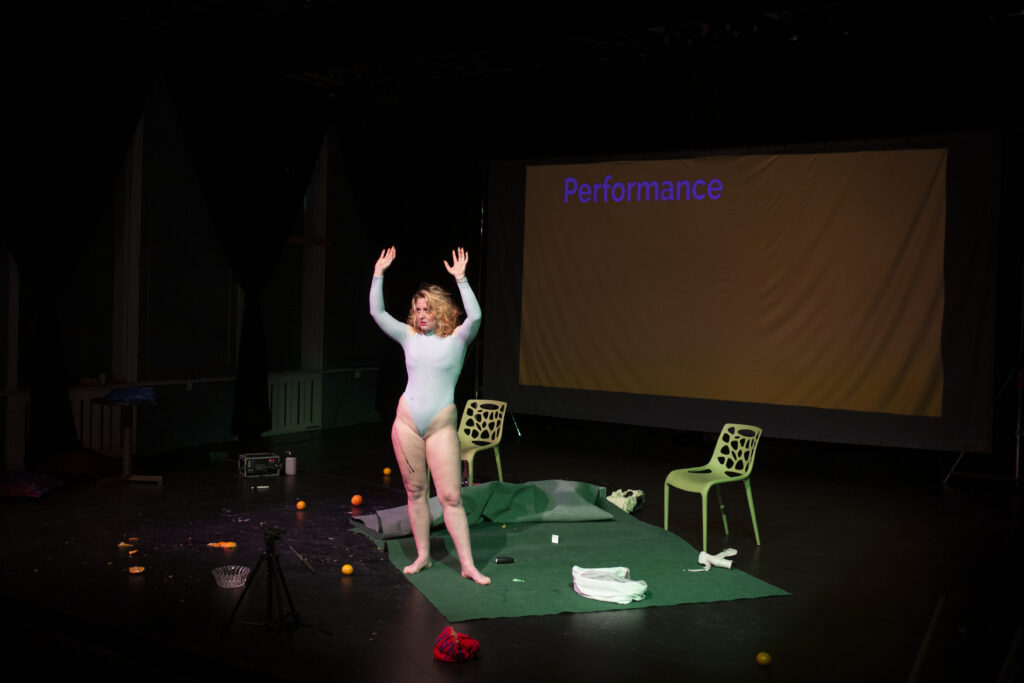
After experiencing your previous sharing, I kept thinking that your project has a political or feminist potential. Who decides what counts as either failure or success? Do you believe your project relates to any societal or political issues beyond the art field?
Guggi: What you brought up with this idea of who is defining… There are things that are not neutral… characteristics you put on things that are at the same time devaluating things. Failure is connoted as negative and success as positive. This is first of all a very binary way of thinking, which is basically how our whole Western-European world is structured.
It sounds like you are close to saying that failing could be a norm-critical strategy?
Guggi: It is interesting that failing is something very advertised in art school. Often, it’s said: “We want you to fail”. Failing is a creative catalyst. But then there is this actual art world out there that makes it very difficult to be an artist. To fail is something quite risky. There is this interesting contradiction, you are supposed to learn that failing is good, but at the same time the whole system tells you that even though failing could be good it is not what you should do. At least to actually really dive into this complexity, and see this friction, with just one word “failure”, that is just not that simple.
You cannot just say one definition. It becomes clear how complex the whole word is and this confusion it makes is the first step to questioning all the norms we navigate in.
Kæy: You are taught to fail but only in the sense that it will end in success. All quotes you find on the internet are always from people who succeeded radically. And then it always becomes fun to talk about how much you fail when now you are a multimillionaire.
Olli: It is quite a privileged thing to be able to fail. Who can afford to fail? We are of course aware of this privileged situation.
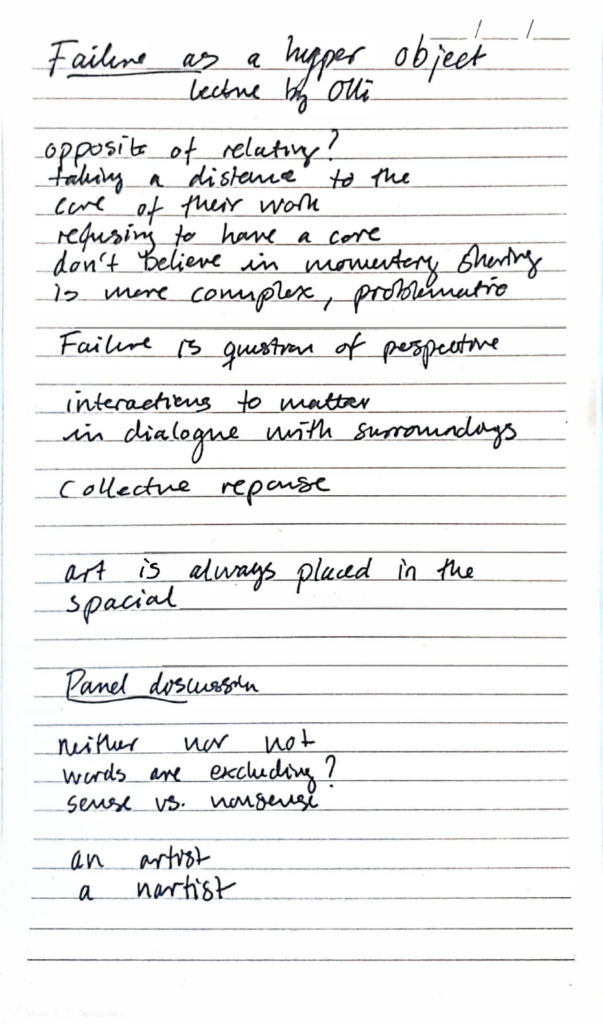
This is your first conference in front of a live audience. How do you feel about lecturing and performing to a live audience compared to virtually?
Beate: I’m looking forward to seeing, if we will have a room full of audience, and maybe that will outnumber our virtual audience.
Olli: We don’t know exactly how many
Beate: We do actually. You can see how many views it has. It’s top seven
Olli: Why do you say that?
Kæy: We didn’t have money for boosting or PR in general. Everything is DIY. I don’t care if the audience is there or not.
Finally, I was wondering, what is the most important point you wish to imprint on your audience?
Beate: That failure as a phenomenon exists really in an interesting spectrum slash sphere that has interfaces and colliding surfaces with so many sectors, and you can really get into an interesting discussion when you look at the withinness of the failure in conjunction with building a platform for failure. That is really something I want to convey to the audience today.
Olli: That we are creating a space in which we feel the vulnerability that is situated here in this moment connected to the actual physical sphere we share.
Kæy: Whatever comes, knowledge, chock, tears, laughter, pissing your pants. That’s it.
Guggi: I think for me the most important part will happen anyway, no matter what we do, which is that people on a Sunday come to this place and just spend some time thinking about failure. With that we can start a conversation on all other things we talked about earlier.
